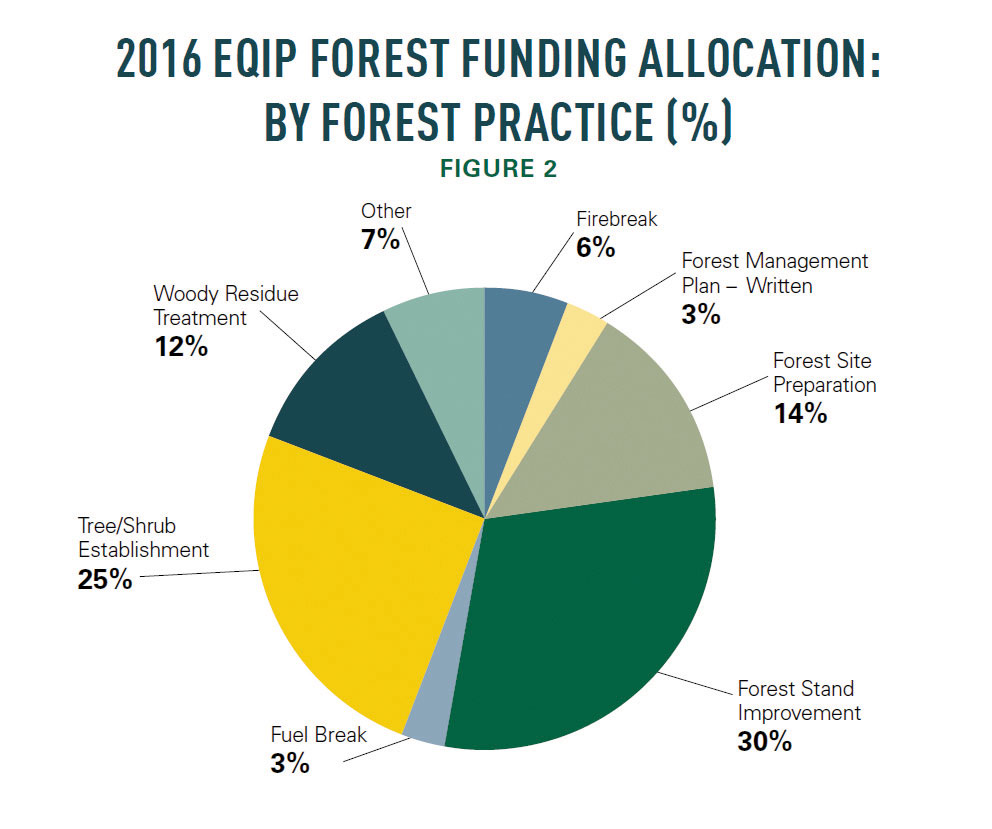Support Forest Owners in the Farm Bill
When most think of the Farm Bill, they think of row crop farming and nutrition programs. But there’s another piece of this bill that is vitally important to the clean water, wildlife habitat and wood supply that Americans count on - the Farm Bill’s conservation and forestry programs that support family forest owners.
Families and individuals, who own and care for the largest portion of U.S. forests, want to do right by the land, but often lack technical expertise and funds to get the work done. The Farm Bill helps these landowners overcome barriers, by providing planning and technical assistance, financial support, as well as policies to help grow markets, research, education programs and more.
How is the Farm Bill Currently Supporting Forest Landowners
The last Farm Bill, passed by Congress in 2014, made improvements in a number of its conservation and forestry programs, specifically for family forest landowners. It has had a considerable impact on families’ abilities to care for and improve their forestland.
In summary, Farm Bill Programs have:
• In just the past 3 years, the Farm Bill’s conservation and forestry programs helped family woodland owners conduct conservation efforts across more than 10 million acres. That’s more than 9,000 acres of family-owned forestland improved per day.
• More than $1.86 billion have been invested in the past 3 years through the Farm Bill to assist forest owners, a figure 3 times the amount allocated to programs for family forest owners through the annual appropriations process in the same timeframe.
• Public-private partnerships, such as the Regional Conservation Partnership Program (RCPP) have better leveraged funds, connected with more willing landowners, and are working towards a greater impact on some of our biggest forest challenges. Federal funds used through these public-private partnerships are stimulating investments by the private side – with private industry, non-profit groups, local governments, universities and more, investing nearly $2 for every $1 federal dollar spent in these partnerships.
• The Farm Bill’s forestry investments have not only put forests to work, but they have also put rural communities to work – we estimate upwards to 86,000 jobs were supported by Americans who helped complete forest conservation practices needed on the land.
• The Environmental Quality Incentives Program (EQIP) helped tackle wildfire risk, insects and disease, improve water quality and more across 1.7 million acres in just 3 years’ time.
◆ Specifically, landowners were able to install 8,300
miles of fire breaks to help prevent catastrophic
wildfires. That’s 3 times longer than the length of the
U.S.
Forest Policy Improvements Aff Would Like to See in the 2018 Farm Bill
As we look toward the 2018 Farm Bill, the American Forest Foundation (AFF) asks Congress to improve on the last iteration to further support landowners in addressing our biggest environmental issues, and continuing to provide the natural resources that Americans count on:
• Maintain funding and support for woodland owners in forestry and conservation programs of the Farm Bill
• Improve technical assistance and program implementation for forest landowners
• Support cross-boundary, landscape scale efforts to tackle forestry issues, especially wildfire
• Provide support and regulatory assurance for landowners who help at-risk wildlife
• Support a strong, diverse forest products industry, including legislation like the Timber Innovation Act and new tools to help grow markets, such as the Community Wood Energy Program 2016 EQIP forest funding allocation by forest practice. (Source: Forest in the Farm Bill: A 2017 Progress Report and Recommendations, American Forest Foundation)
2016 EQIP forest funding allocation by forest practice. (Source: Forest in the Farm Bill: A 2017 Progress Report and Recommendations, American Forest Foundation)
Forests in the Farm Bill Coalition
In addition to being the voice of family forest owners in Washington, D.C., AFF co-leads the Forests in the Farm Bill Coalition, a coalition of organizations that works to build broad forest and conservation support for forest policy priorities in the Farm Bill.
The Coalition, which has been in existence for more than 15 years, includes more than 90 forest and conservation groups representing all aspects of the forest sector, including forest owners, conservationists, hunters, anglers, forest industry and natural resource professionals. It is co-chaired by the American Forest Foundation, National Association of State Foresters, National Wild Turkey Federation, and The Nature Conservancy.
This story was reprinted with permission. It was published by the American Forest Foundation at https://www.forestfoundation.org/forests-in-the-farm-bill
